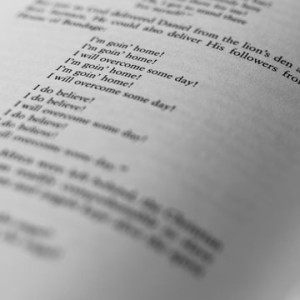
Photo by Brooks Leibee on Unsplash
Writing Prose and Verse
Explore this module
Introduction
Prose and verse are two different forms of written text. Prose is simply “everyday” speech. Characters who speak in prose speak in normal sentences, with normal sentence structure and grammar. Verse, on the other hand, has a specific rhythm and pattern. This guide will further define both and explain some ways to use them in a play.
Terminology
Prose: speech that follows a person’s normal way of speaking, with standard grammar and sentence structure.
Verse: speech that has a specific rhythm and pattern. There are a number of specific types of verse.
Iambic pentameter: a type of verse with ten syllables per line and syllables alternating between unstressed and stressed beats.
Rhyme scheme: the pattern of rhymes at the end of each line of text in verse.
Blank verse: text in verse that does not rhyme.
Feminine ending: when iambic pentameter has an extra unstressed syllable at the end of a line.
Context & Analysis
Preparation
Most contemporary realistic plays are written in prose, because that’s how people typically speak. However, many classical playwrights like Shakespeare wrote plays partly in verse. Note that there are few plays that are completely in verse. Most plays that do use verse use a mix of prose and verse, which means that verse is used very specifically.
to read our learning module for Writing Prose and Verse and to unlock other amazing theatre resources!StageAgent Resources
StageAgent Sections
Guides
Shows
Writers
Monologues
Shakespeare in Context
Career Guides
Blog Posts
Links & Media
Quizzes

Kevan Dunkelberg
Oklahoma-based drama teacher, actor and playwright